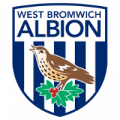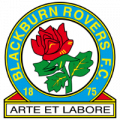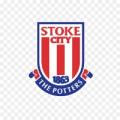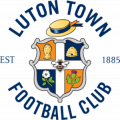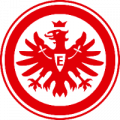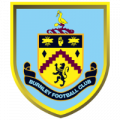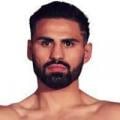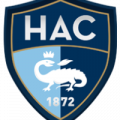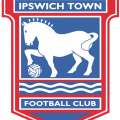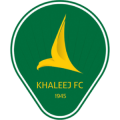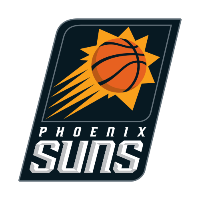
Phoenix Suns

1968 Phoenix
Phoenix Suns is a basketball franchise that plays in the Western Conference of the NBA. It was founded in 1968 as a result of expansion with Milwaukee. The Suns would become the first professional team to play in the major sports leagues in the state of Arizona. They have two conference titles and six division titles to their credit. They have reached the NBA Finals twice, losing both times. Hall of Famers such as Charles Barkley, Steve Nash, Grant Hill, Jason Kidd or Gail Goodrich have played for the team.
First steps in the NBA
The Suns' history in the NBA began with its main investors, Richard Bloch, Karl Elliot, Donald Pitt and Don Drummond, who gave the state of Arizona its first team in the U.S. major leagues. The name Suns was chosen after a popular vote, honoring the hours of sunshine the state enjoys. In addition, the Phoenix area is known as the Valley of the Sun. The franchise entered the competition in the 1968 expansion along with Milwaukee. If there is one figure to highlight in the early days of the franchise, it is Jerry Colangelo, who at 28 was set to become General Manager. Phoenix tiptoes through the first few years; in their first seven seasons, they only participate once in the postseason.
The best game in NBA history
The Phoenix project began to take off in 1975, proof of which was their record of 42 wins, qualifying for the playoffs for the second time. With a charismatic team, they managed to defeat the reigning champions, the Warriors, in the first round. The team's crowning moment came in the finals against Boston, playing a series and a historic fifth game, considered the best game in the history of the NBA. It was a clash that featured three overtimes, injuries, ejections and unexpected protagonists. On June 4, 1976, the Celtics, led by veteran Havlicek and future hall of famer JoJo White, were favored against the Suns, who had just pulled off a surprise. Phoenix got the job done at home and evened the series before returning to the Garden for the famous Game 5. Havlicek, in a secondary role, surprisingly came out as a starter, a first morale boost for Boston. The game was defined in three overtimes where the hitherto unknown Boston rotation player, Glenn McDonald was forced to play being key in the overtime to give the third victory to his team. White with 33 points was the best of the game. The final was resolved in the sixth game giving the victory to the Easterners. The Suns of that season were nicknamed the Sunderella Suns, referring to their Cinderella status in the series.
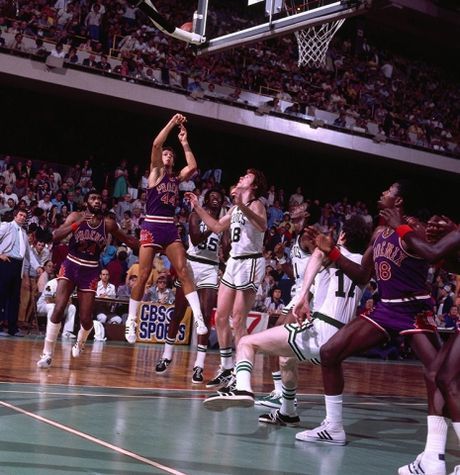
This episode served to give wings to the project, in 1985 ended a streak of 8 consecutive seasons playing playoffs. In that period they lost twice in the conference finals, in 1979 to Seattle and in 1984 to Los Angeles. The death of Nick Vanos in a plane crash triggered times of uncertainty in the franchise. The Suns management, in a slump, was forced to make trades to turn the situation around. They sent Larry Nance to Cleveland in exchange for Kevin Johnson, Mark West and Tyrone Corbin. Tom Chambers arrived in 1988, followed by Kurt Rambis. The pinnacle of a group that managed to play playoffs for thirteen uninterrupted seasons came in 1992, with a 53-29 record, where four players (Chambers, Johnson, Hornacek and Majerie) were in the playoffs. Even so, they fell in the semifinals to Portland.
Charles Barkley arrives in Phoenix
In 1992, Charles Barkley arrived from Philadelphia via trade. The arrival of the player who came from shining in Pennsylvania was a blow on the table of a franchise considered second-tier. Barkley's decision to play in Arizona was compensated with a great individual performance, winning the MVP of the season award. Phoenix had all the ingredients to win. A compact team and a top star. Players like Danny Ainge or Oliver Miller, led by franchise legend Paul Westphal. A dream team that achieved 62 regular season wins, but stumbled in the Finals (second and last in franchise history) against the Bulls of Jordan and Pippen. They fell in a dramatic series that once again featured a three-overtime game. The third game had to be resolved in overtime. The runner-up finish was celebrated in style in Phoenix. The franchise had changed its status and had the ability to compete against the big boys.
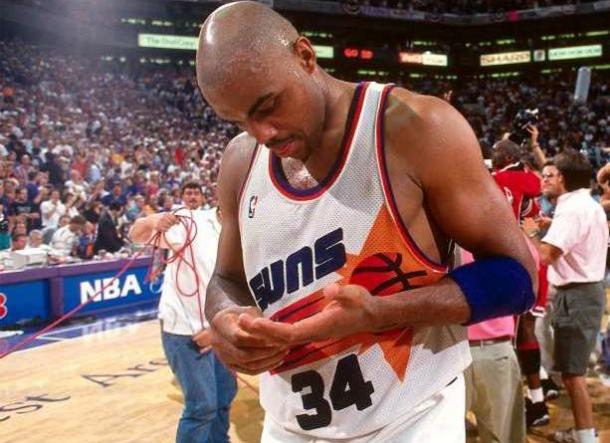
The years to come were not as plagued with success as expected. Several pieces were added to make up the winning project, but they lost two consecutive years to Houston. On both occasions they squandered a 2-0 lead.
The end of this golden generation in Phoenix encouraged a change of cycle. In 1994, Jerry Colangelo, Bryan's son, traded Majerie for John Wiliams. This operation was not as fruitful as expected. For the 95/96 season, Westphal's time at the helm of the bench ended, that added to Barkley's departure to Houston in a last attempt to win the ring. That trade was disastrous for both parties.
Steve Nash appears on the scene
The 1996 draft serves as a turning point in the history of the Arizona franchise. With the 15th pick, Canadian point guard Steve Nash was selected. The young white point guard was not well received by the fans. Motivated by the fact that he was the understudy to Jason Kidd and Kevin Johnson, Nash was traded to Dallas.
This was the end of Steve's first stint in Phoenix. The Suns were unable to get back on track. With an 0-13 record in 96/97, the management was forced to make numerous changes. The arrival of players like Horry helped to change the dynamic and reach the playoffs. In 1999 the arrival of Penny Hardaway led to the dubbing of the duo he formed with Jason Kidd as Backcourt 2000, although that relationship never worked out due to injuries. Only in playoffs we could see the best version of both together, eliminating the Spurs in the first round. Despite that, they lost to the Lakers. That summer Penny was sent to New York
The return of Steve Nash
In 2004 free agency, the Suns picked up a veteran Steve Nash who was returning home. Fans reluctant to sign a veteran player did not bless the signing. Despite this, Nash's partnership with Coach D'Antoni was essential to the success. With a 62-20 record in his first season, Nash won the MVP award and Mike D'Antoni the coach of the year award. Amar'e Stoudemire, who was an All-Star as well as Shawn Marion, was also a part of this historic team. Success was assured, but once again they fell in the playoffs. After eliminating Memphis and Dallas, they could not beat San Antonio.
The following year they kept the block but Amar'e's knee problems and Joe Johnson's trade motivated Nash to show a superlative version. The point guard won his second MVP, becoming the second point guard after Magic to repeat the award in back-to-back seasons. Despite this, the controversy was served because Kobe, with better numbers, was weighed down by the record of his Lakers in the fight for the MVP, in favor of the Canadian who had achieved 52 victories. A duel that would be lived in the first round of the playoffs, where the Suns eliminated the Lakers in seven games. But once again, their playoff run was hampered after losing to Dallas.
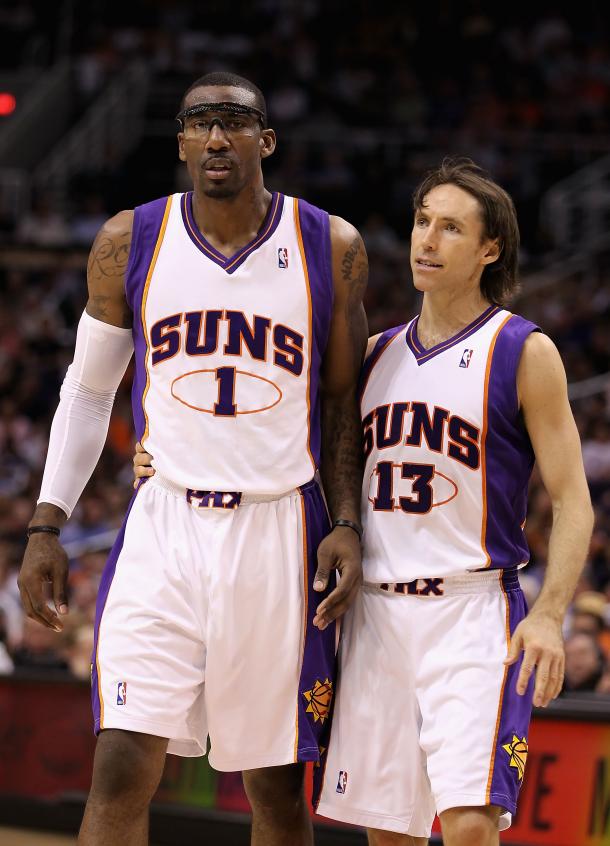
In 06/07, the Suns win 61 games and Nash is close to winning his third MVP, but this time it was Germany's Nowitzki who won the award. A historic season as both Nash and Stoudamire were chosen in the best five. Leandro Barbosa was also voted best sixth man. But one more year their playoff campaign was marred by San Antonio's performance in a controversial conference semifinals where a scuffle between Nash and Horry hurt the Canadian more due to a higher penalty.
In 2007, Rudy Fernandez was selected in the draft and traded to Portland. That year saw the arrival of Grant Hill, a future Hall of Fame player. With Steve Kerr as General Manager, an unexpected transfer took place, as Shaquille O'Neal arrived in Arizona from Miami. The legendary center in his last years would experience a slight improvement the following year, despite this, they did not achieve the goal of playoffs. After four seasons playing postseason, missing one meant changes and they were not very fruitful, as they were facing the end of a stage where the players were already turning over a new leaf. In 2009, after losing to the Lakers in the conference finals, Stoudemire did not renew his contract and headed for New York. Forced to rebuild, Turkoglu, Childress, Warrick, Gortat, Vince Carter and Pietrus arrived.
The eternal rebuilding
In 2012 after a sing and trade, Nash signed with the Lakers. The trade of probably the best player in the history of the Suns motivated a change of dynamics focused on a deeper renovation. Dragic, Beasley, Scola, Wesley Johnson among others arrived. They signed the second worst season in Phoenix history, only 25 wins. The following year, a slight improvement after the arrival of Jeff Hornacek meant the achievement of one of the most unfortunate milestones in NBA history. With 48 wins, they became the team with the best record that failed to qualify for the playoffs.
In the following years, the most awaited for Phoenix fans is the NBA draft spot. In 2015 they select the key player on which they are building the future, Devin Booker in the 13th position. In 2016 with a pick in the fourth position, the Suns selected Dragan Bender. 2017 was a sentencing year, as they posted the worst record of the season which rewarded them with a number one draft pick. In 2018, DeAndre Ayton was the pick in a draft class where they passed on Doncic and Trae Young. As of today, with a team where youth takes precedence, it is Booker and Ayton who are the pillars to build a future tied to success.
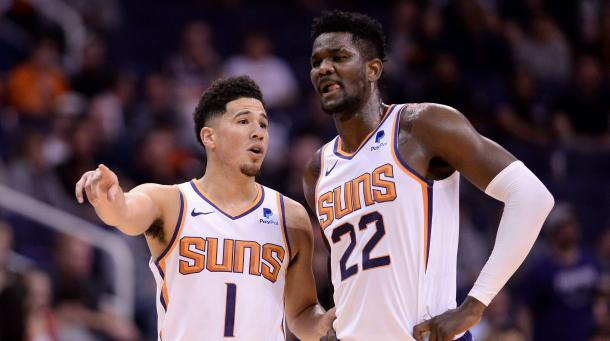
Biography by Juan Guillermo Salas




